What the Internet Was Like in 1995
In 1995, Netscape went public and Microsoft noticed the internet — the browser wars began. Also that year, Amazon and eBay launched, JavaScript and PHP debuted, and the web went mainstream.
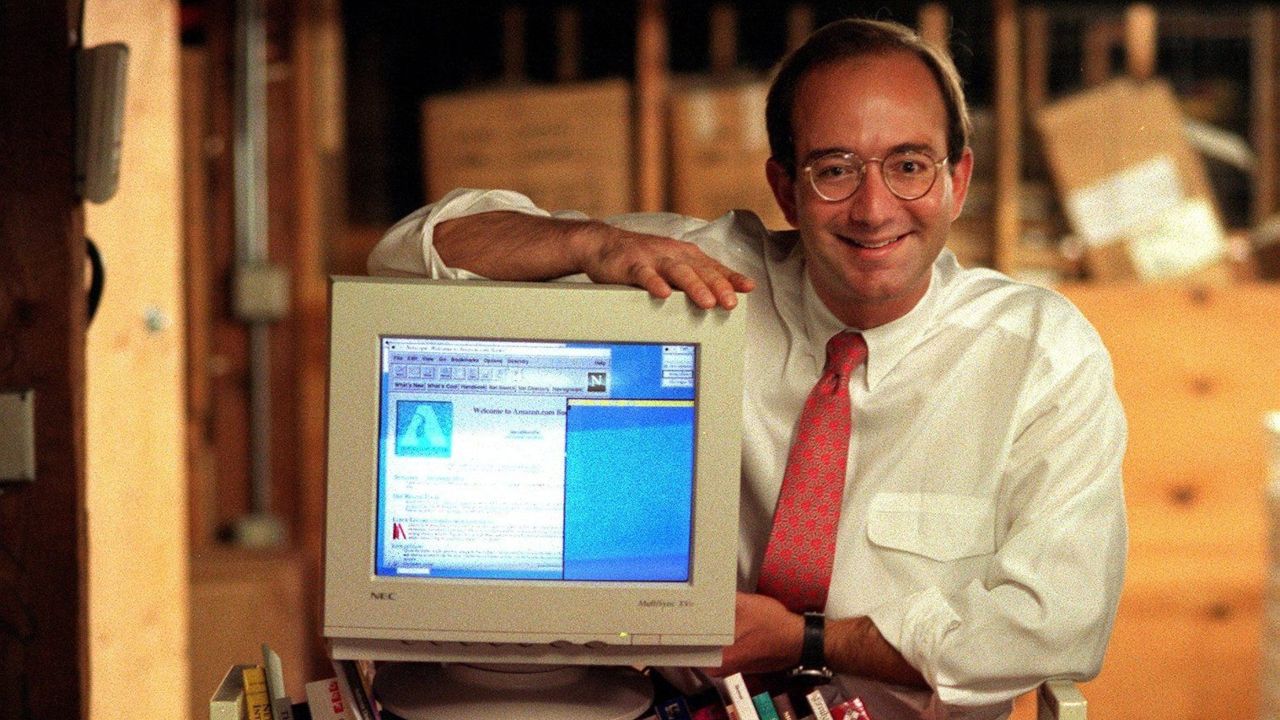
At the beginning of 1995, the internet was still largely the domain of academic-minded geeks and Silicon Valley hippies. But the culture at large was increasingly taking notice of cyberspace. Throughout 1995, millions more people went online and thousands of companies bought “dot com” domain names. The web was now open for business.
From January 1995 through till the end of December, the Web grew from just over 10,000 websites to 100,000. Some of the most famous internet businesses of today were born 30 years ago, including Amazon and eBay. Netscape became the first successful startup of the commercial web, going public in August 1995.
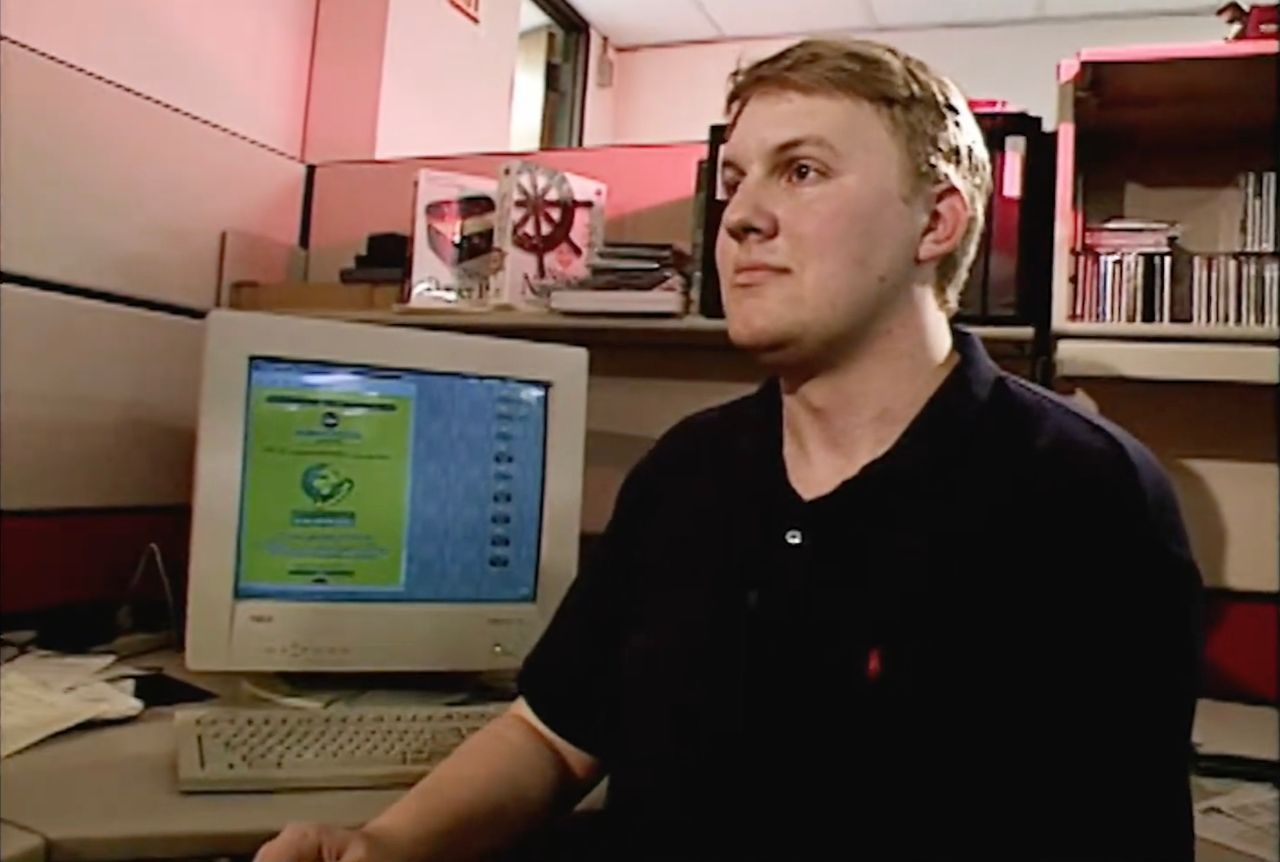
The Browser Wars Begin
In addition to these new online juggernauts, 1995 was the year that Microsoft went all-in on the Internet. Bill Gates sent his famous “Internet Tidal Wave” memo to senior staff on May 26, 1995. “The Internet is the most important single development to come along since the IBM PC was introduced in 1981,” Gates wrote. He named Netscape as a key competitor:
“A new competitor "born" on the Internet is Netscape. Their browser is dominant, with 70% usage share, allowing them to determine which network extensions will catch on. They are pursuing a multi-platform strategy where they move the key API into the client to commoditize the underlying operating system.”
To decipher that from geek speak, Gates was worried that Netscape’s web browser application (the “client”) would become the key platform for software developers going forward. He'd decided that Microsoft needed to compete with Netscape at the browser level, in order to protect its near-monopoly of the operating system.
Then, on August 9, 1995, Netscape became the first internet IPO (Initial Public Offering). The internet was now officially serious business. Microsoft released its own web browser, Internet Explorer 1.0, just a week after Netscape’s IPO. This initiated what would later be called “the browser wars.”
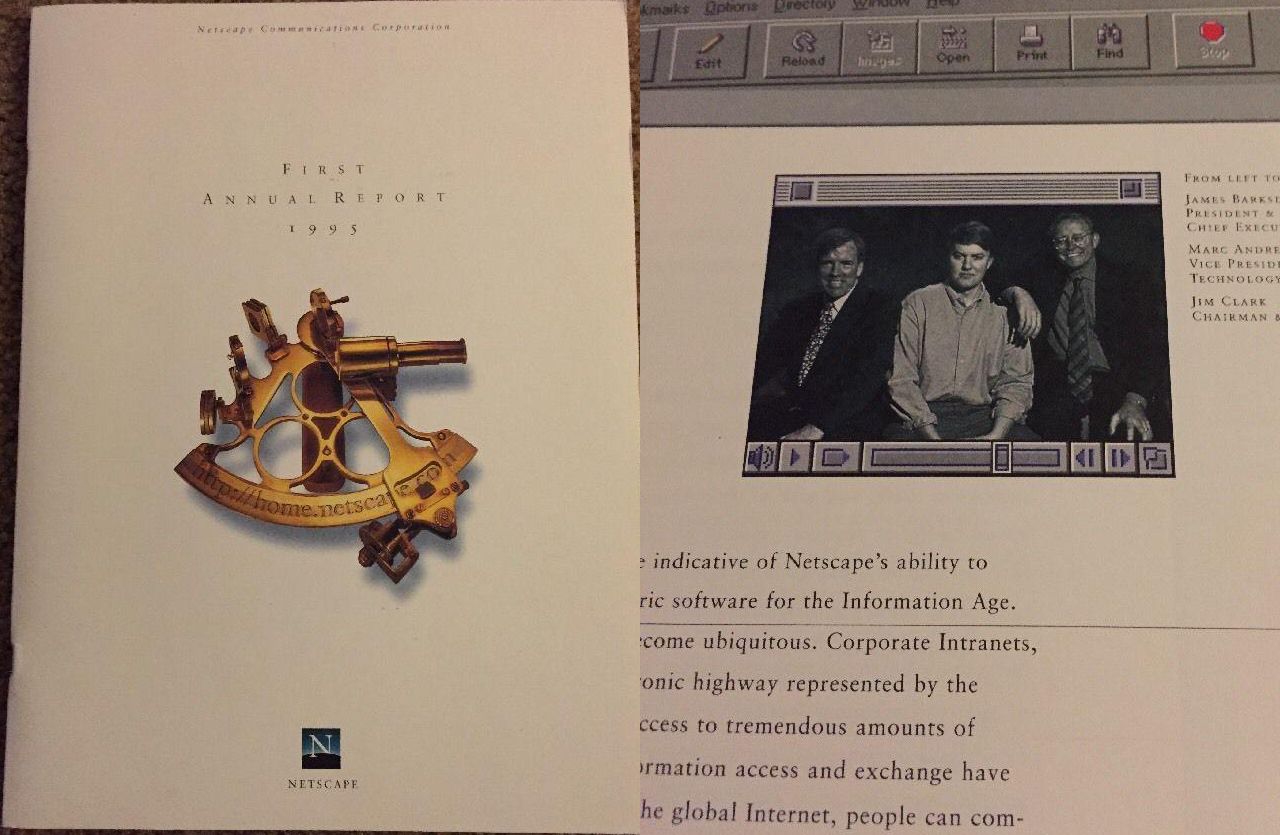
E-Commerce Arrives
Meanwhile, online commerce began in 1995 with the launch of Amazon in July and eBay in September (initially using the name AuctionWeb). In his canonical history of Amazon, The Everything Store, Brad Stone describes the experience of using Amazon's new website in the spring of 1995:
"There was a virtual shopping basket, a safe way to enter credit card numbers into a Web browser, and a rudimentary search engine that scoured a catalog drawn from the Books in Print CD-ROMs, a reference source published by R. R. Bowker, the provider of the standard identifying ISBN numbers for books in the United States."
The website itself was primitive in its design, with blue text links (the default link color in the early web) and a crude logo of a large 'A' with a depiction of the Amazon river running through it.
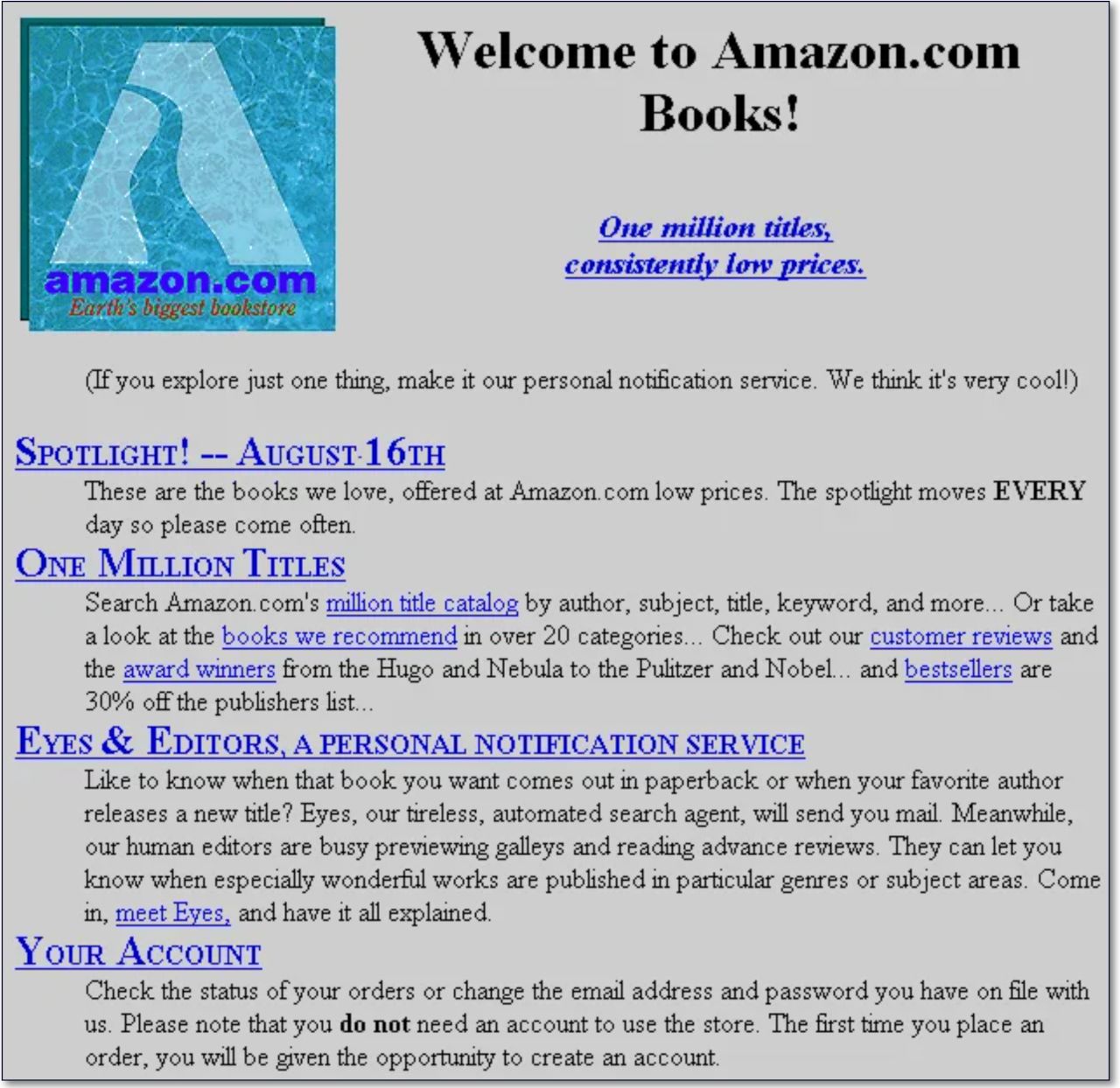
In later years Amazon would become known for its sophisticated web operations — most famously with cloud computing, which Amazon pioneered at scale in the early years of the 21st century. But in 1995, it was a much more manual process, as Stone describes:
"There was little science to Amazon’s earliest distribution methods. The company held no inventory itself at first. When a customer bought a book, Amazon ordered it, the book would arrive within a few days, and Amazon would store it in the basement and then ship it off to the customer. It took Amazon a week to deliver most items to customers, and it could take several weeks or more than a month for scarcer titles."
Despite the fairly basic setup, it was a start! Amazon and eBay had essentially created a new category of web business: e-commerce.
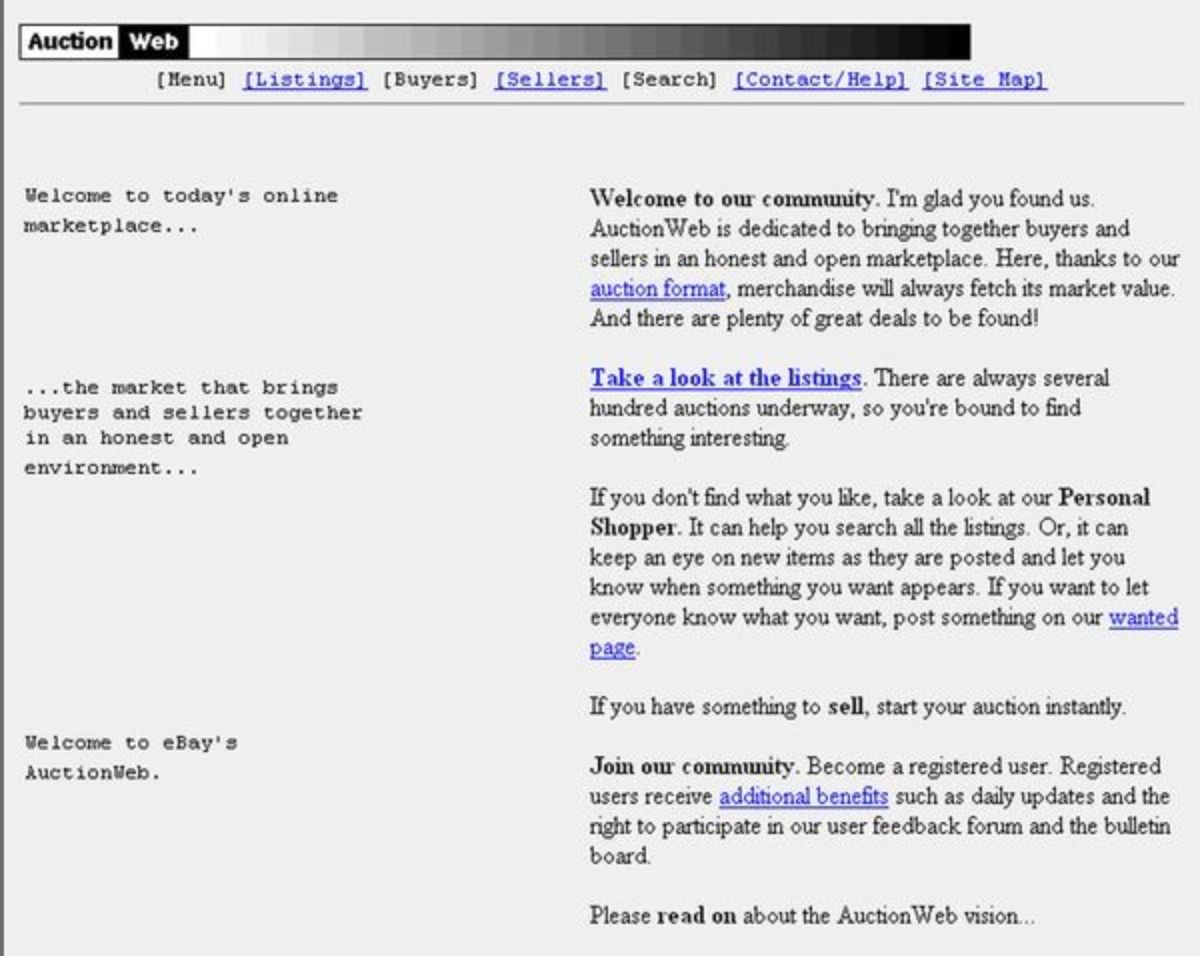
1995 Cyberculture
By mid-1995, the internet was impacting mainstream culture — which tech magazines and academics had begun calling cyberculture.
Three big budget internet-themed movies were released in 1995: the Keanu Reeves flick Johnny Mnemonic in May, The Net with Sandra Bullock in July, and Hackers in September. (Two other 1995 movies had a virtual reality premise: Virtuosity, starring Denzel Washington and Russell Crowe, and Kathryn Bigelow’s Strange Days.)
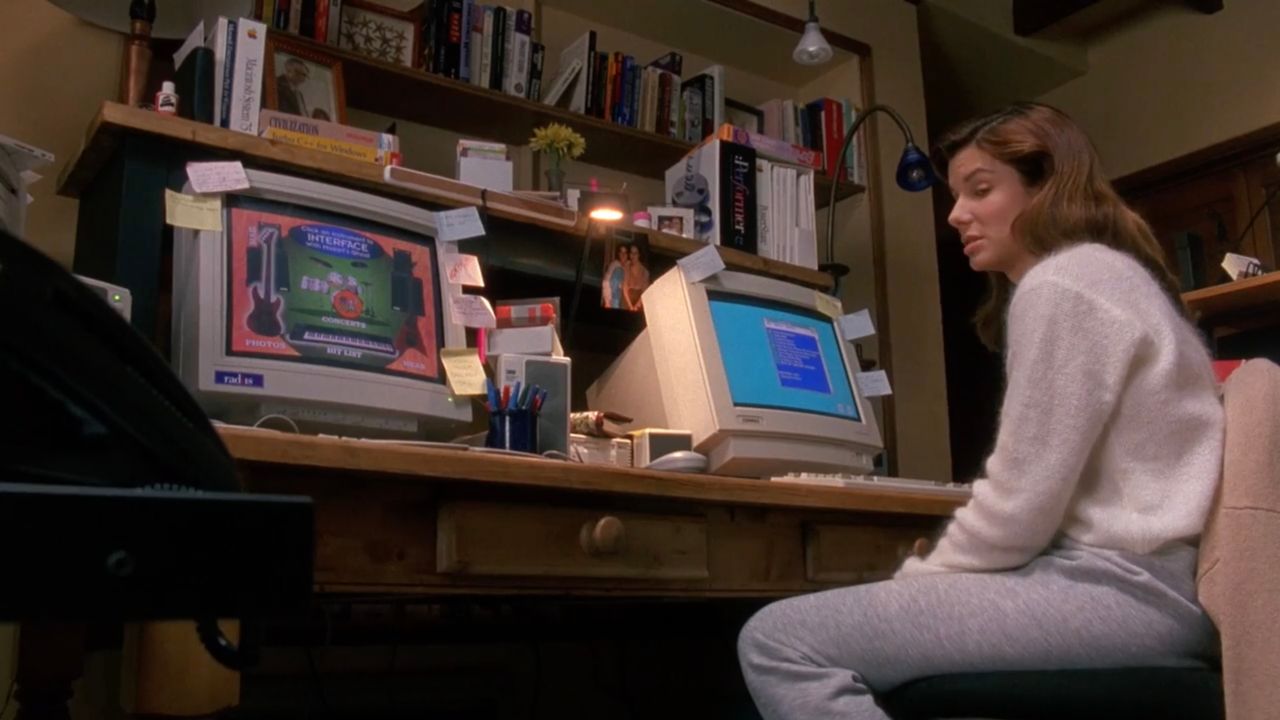
Just as importantly, by this point even non-geeks could create a home for themselves on the World Wide Web. The emergence of GeoCities over 1995 — called Beverly Hills Internet for most of the year — made it easier for non-technical people to create a "home page." Its design elements were clunky and destined to become clichéd, but GeoCities would be an important stepping stone for the rise of creative expression on the web over the rest of the decade.
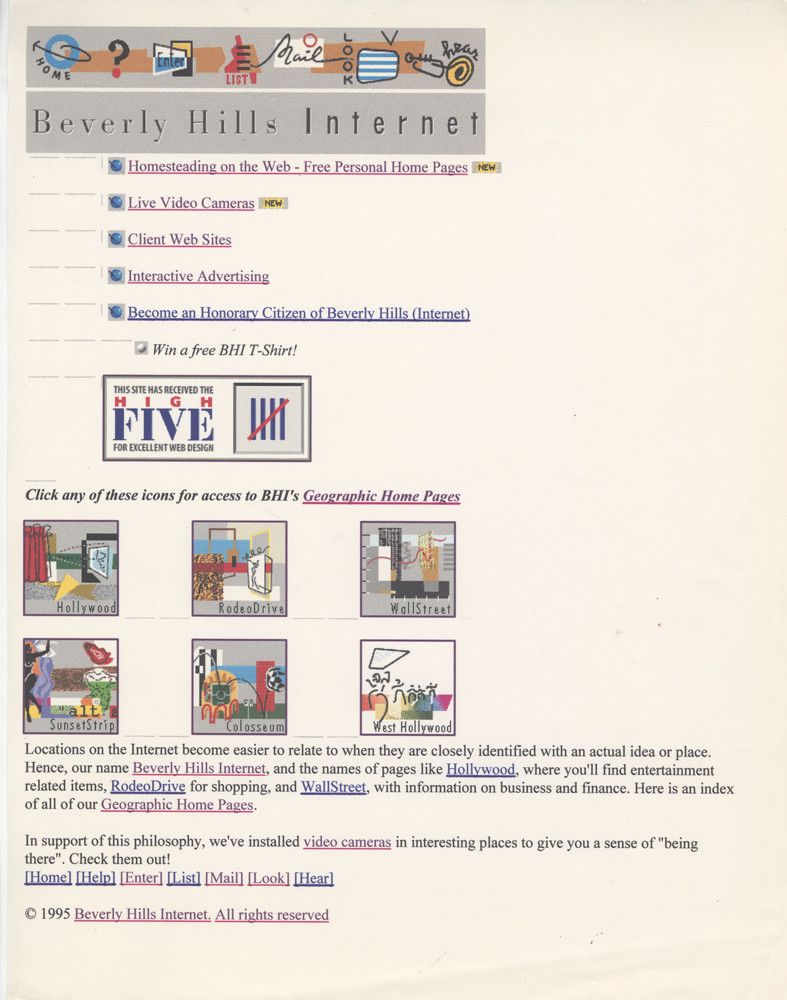
JavaScript and Interactivity
JavaScript was invented in a two-week flurry in May 1995 by Brendan Eich, at the time a newly hired developer at Netscape. The project was initiated by Netscape because of a desire to extend the early Web beyond the limits of HTML, the declarative markup language that web pages are written in. In particular, Netscape wanted to add interactivity to websites. JavaScript ended up being the solution.
It’s hard to picture it now, thirty years after the fact, but at the start of 1995 web browsers had limited functionality. There was zero interactivity and support for the web standards of the day was patchy. As Adrian Roselli put it, Netscape Navigator 1.0 (released in December 1994) “pre-dated frames, cookies, HTML tables (support came in 1.1), JavaScript, and support for any of the robust features of HTTP.” So it supported HTML markup, but not much more than that.
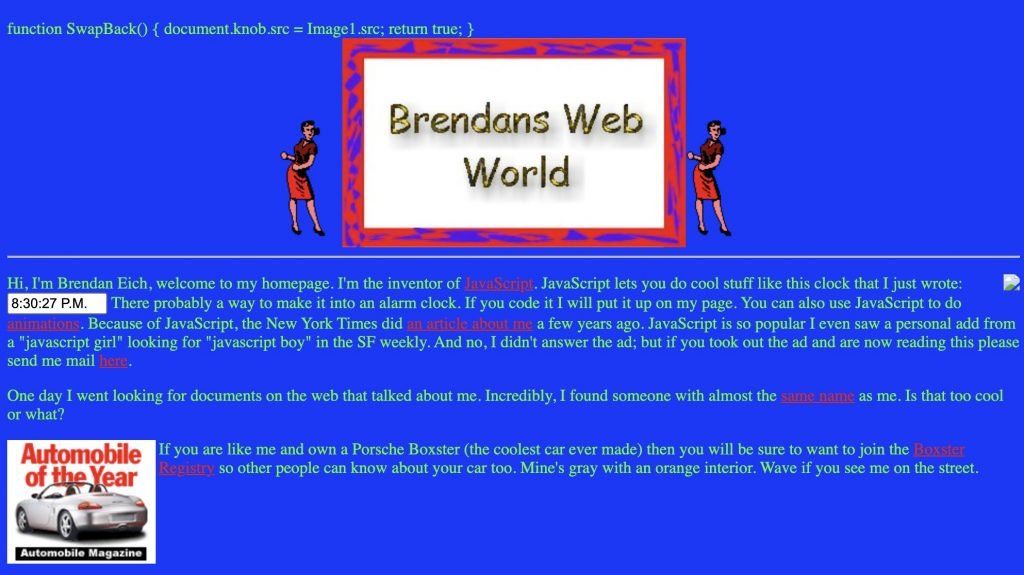
The hottest new web programming language of 1995 was actually Java, which Sun Microsystems launched in May. But Java was seen as too complicated for web designers and other non-programmers to use. The idea was that JavaScript would be a "scripting language" to create small programs that ran inside the Netscape browser, while big brother Java would be used for developing more complex web components.
Eich saw JavaScript as “a ‘glue language’ for the Web designers and part time programmers who were building Web content from components such as images, plugins, and Java applets.”
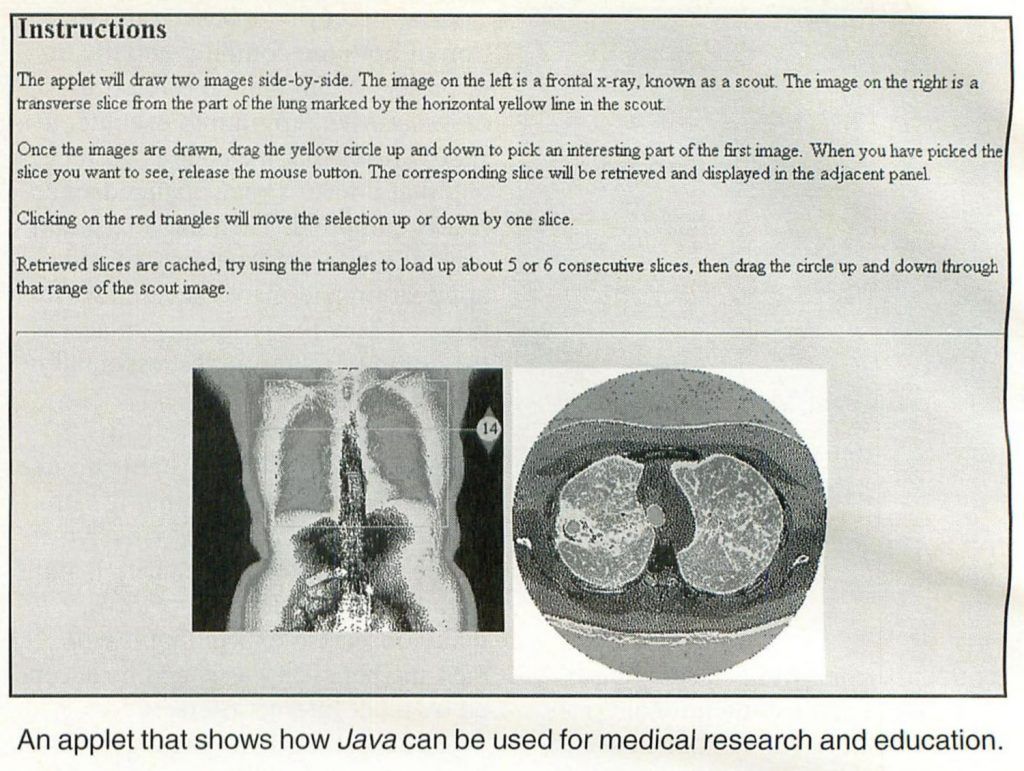
When the beta of Netscape Navigator 2 came out in September, it included the first version of JavaScript — although at that point it was named LiveScript. Then in early December, a press release was issued by Netscape and Sun Microsystems that officially announced JavaScript.
There aren’t a lot of examples of JavaScript in late 1995 that are still accessible on the web, but on the Wayback Machine you can view a list of basic JavaScript applications by one Michael P. Scholtis. Examples include Ticker Tape (“ticker tape scrolling text”), Rainbow (“gives the nice rainbow effect to your text”), and bgcolor Fade (“fades the bgcolor in and out on load and unload of a page”).

So by the end of 1995, the leading web browser of the day — Netscape Navigator — had a method to add small, relatively simple, bits of interactivity onto a webpage.
PHP and Web Programming
1995 also saw the emergence of a new "stack" for web programmers to build with.
Just a month after Brendan Eich created JavaScript at Netscape, an independent developer from Canada named Rasmus Lerdorf released the first version of a toolset he called Personal Home Page Tools (PHP Tools). At this point, it wasn’t a scripting language (although it would eventually become one). As of June 1995, when Lerdorf announced the project, it was a utility library and templating engine for the Common Gateway Interface (CGI). In modern terms, we can think of it as similar to a JavaScript library like React — but obviously much less complicated, since this was 1995.
The idea was that web programmers could use PHP Tools to do things like creating an online form, using form data elsewhere on a website, creating password-protected pages, logging page view statistics, displaying last access information on a web page, and more.
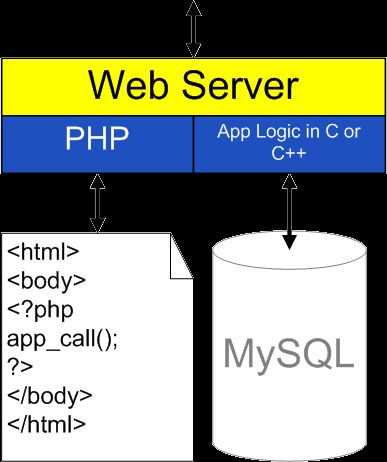
By the end of 1995, the foundational pieces of the open source LAMP stack for web development (Linux, Apache, MySQL, PHP/Perl/Python) were in place. The acronym itself would not be coined for another few years, but the technology had arrived — albeit at varying stages of maturity and adoption. Perl was the go-too web programming language for web developers in 1995, although PHP and JavaScript soon began pulling developers away. The Apache web server arrived in 1995 too, as did the MySQL database.
All of these were open source technologies, or would soon become so in the case of MySQL.
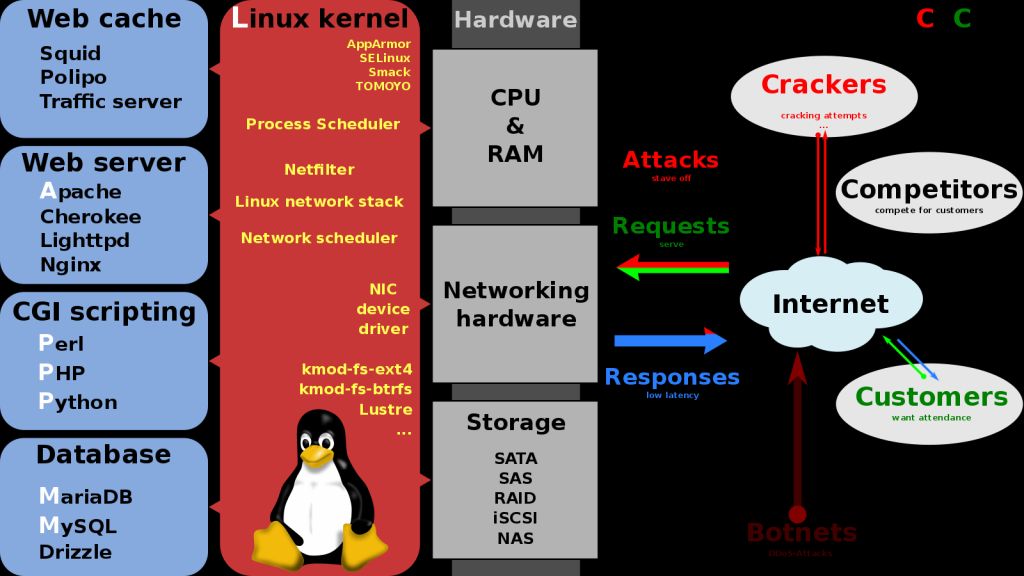
Technically speaking, it was the LAMP stack that enabled the dot-com boom that followed the Netscape IPO. In other words, these web programming innovations were a big reason why the internet became a mainstream phenomenon in 1995 and beyond.
Buy the Book
My Web 2.0 memoir, Bubble Blog: From Outsider to Insider in Silicon Valley's Web 2.0 Revolution, is now available to purchase:
- Paperback, US$19.99: Amazon; Bookshop.org
- eBook, US$9.99: Amazon Kindle Store; Apple Books; Google Play
Or search for "Bubble Blog MacManus" on your local online bookstore.